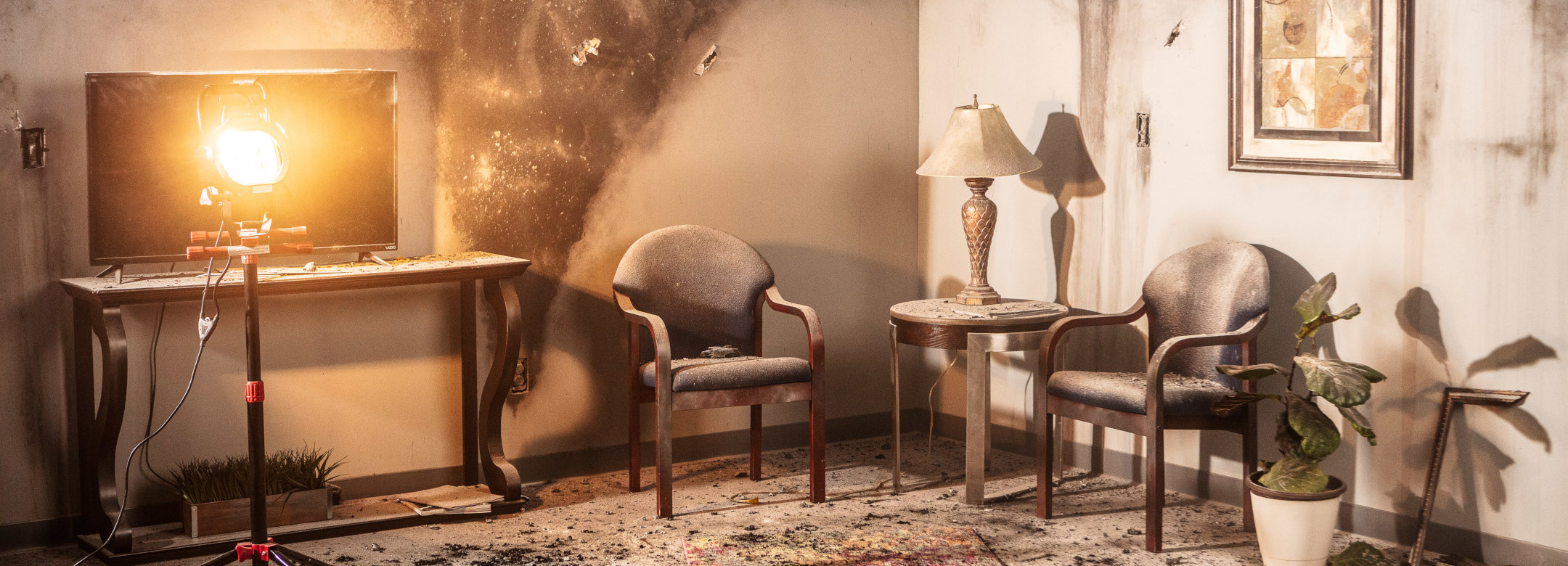Any type of fire damage on a property is a devastating event, but when it affects a business’ bottom line it can be a particularly catastrophic experience. For commercial property owners or managers, fire prevention and employee safety are undoubtedly chief concerns.
By knowing the most common types of fire within commercial properties, as well as the primary and secondary damage that can be incurred by them, businesses can ensure all the necessary steps are taken to get operations back to normal as quickly as possible.
Cooking Fires
Cooking equipment malfunctions, as well as unintended accidents in kitchens, break-rooms, and other areas where employees prepare meals, pose major risks to all types of businesses, not just those that cook food professionally. Food items left unattended while being prepared, as well other human errors in handling, installing, or operating cooking devices can have incredibly destructive consequences.
While kitchens are at a high-risk for an accidental blaze, there are some easy steps that business owners can take to make sure these areas are protected. Sprinklers, alarms, and easily accessible fire extinguishers are crucial first steps, but employee safety training is just as important. Both by implementing protocols and safety procedures in food prep areas and by devising an employee fire evacuation plan, business owners can stave off damage caused by kitchen accidents.
Electrical Wiring Fires
Electrical wiring that hasn’t been regularly maintained, is improperly wired, degraded, or just plain defective can be a major building vulnerability. Making sure that all wiring and electrical components are operational, kept up to code, adequately serviced, and suitable for the needs of the facility are essential steps in deterring a fire.
Heating Unit Fires
Heaters, boilers, and furnaces all carry their own distinct risks if not properly installed, kept up to code, or regularly cleaned. Jurisdictions have regulations in place to ensure heating units are properly maintained, yet there is still a distinct danger, even if all procedures are followed. Proper servicing and maintenance to all heating systems are crucial components in a business owner’s fire prevention arsenal.
Smoking Fires
Despite indoor smoking now being relatively obsolete in most parts of North America, improper disposal of cigarettes and cigarette smoke damage remain an occasional cause for concern. If smoking occurs on a facility’s property, designated smoking areas that are ample distance from any combustible material and making clearly marked receptacles for extinguishing cigarettes readily available to smokers, are easy ways to avoid having to make costly cigarette smoke damage restorations.
Intentionally Set Fires
Other accidentally started fires in the workplace have significant risk-factors, as, unfortunately, do arson and intentionally started fires. Monitoring systems and fire suppression units are strong deterrents in stopping maliciously caused fire, as are regular cleaning and removal of flammable materials from facility grounds.
Wildfires
While the general danger of fire concerns everyone equally, properties in certain geographic regions face different threats than others. Wildfires in the western United States and other low humidity, low moisture regions pose a significant hazard to commercial properties.
When a facility is in an area that could potentially be affected by wildfire or wildfire smoke, the best way to reduce the exposure is to be prepared. Keeping HVAC systems serviced, properties clean of debris, and generally understanding the hazards and types of threats of the region can help in avoiding events that are costly and difficult to overcome.
